Given the mysterious nature of creative insight, there’s an undeniable appeal to learning how your brain works. That’s why Format launched a chatbot that can assess your creative mind. Simply answer a few questions and the source of your genius will be revealed.
The chatbot’s technology is based on research by professor of cognitive neuroscience Arne Dietrich. He concluded that there are four types of creative insight: Spontaneous, Deliberate, Emotional, and Cognitive. These combine into four unique creative personas.
Here’s a matrix that might make things a bit more clear:
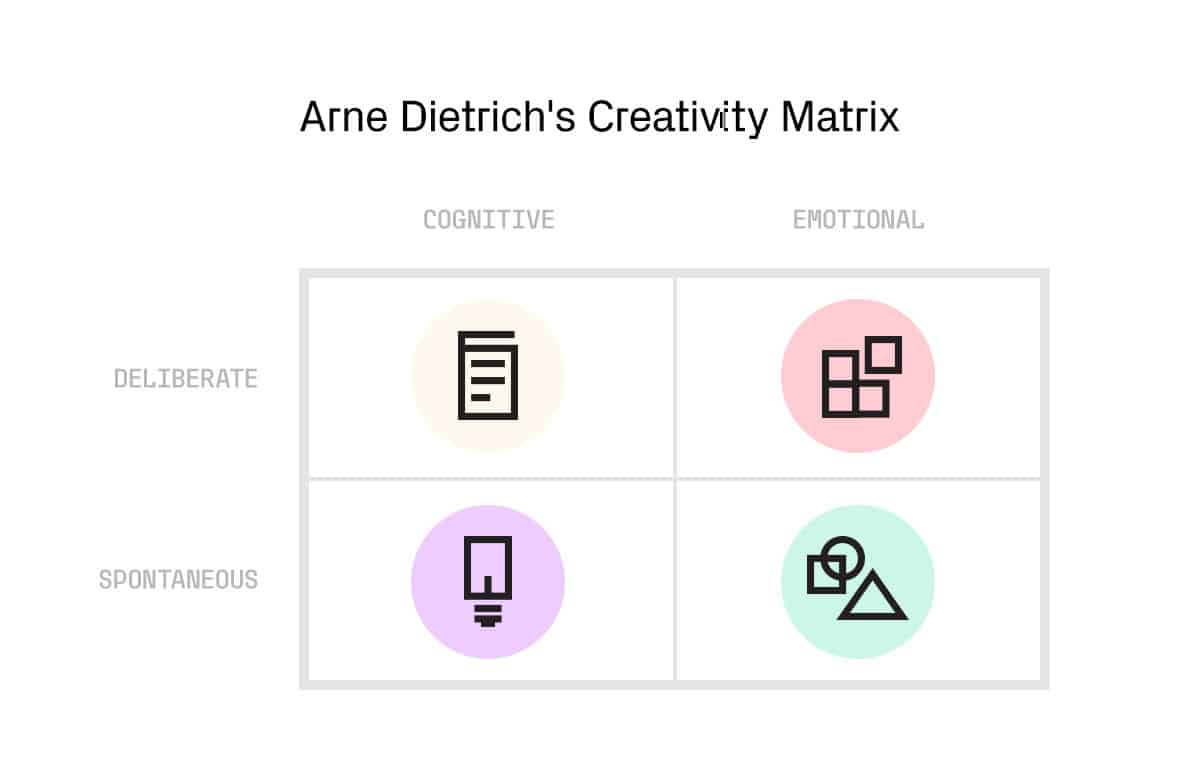
Cognitive creativity is based on logic and experiential knowledge, while emotional creativity is guided by feeling and intuition. Deliberate creative thought is based on a planned process with a clear goal, while spontaneous creativity is what happens when a great idea pops into your head out of nowhere.
To bring these four creative types to life, we turned to meme lord @sensualmemes. She combed through the research and created starter packs for each type. Which one are you? If you’re not sure right off the bat, chat with our chatbot to find out.
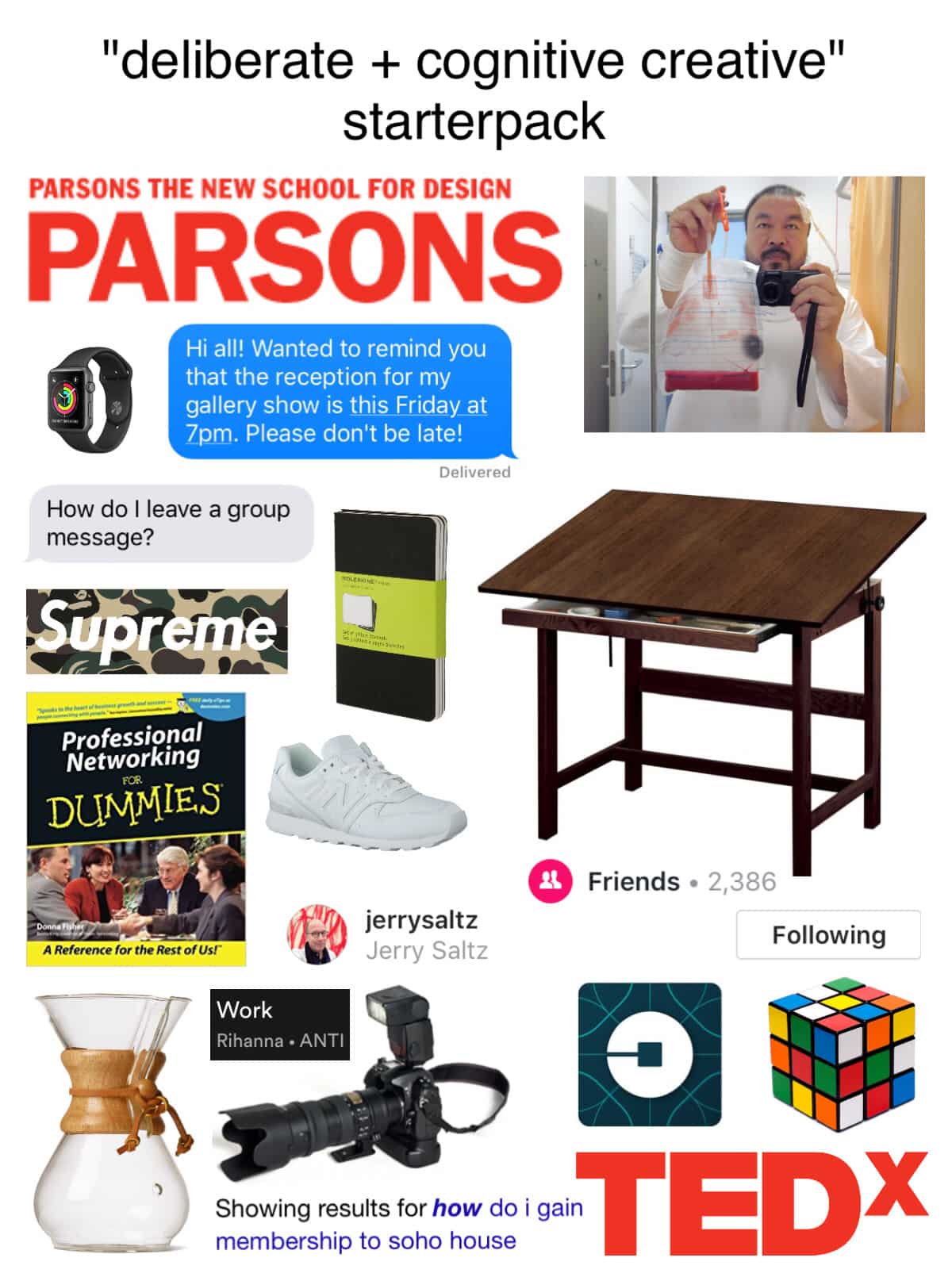
Deliberate and Cognitive
These creatives are the type to make a business plan for being an artist. They’re pros at networking and making connections, and they probably have an ungodly number of Instagram followers. Their creativity comes from building up a big background of knowledge and a highly defined skill set, and then putting it into action.
Goal-oriented planners, they’re not fazed by failure, and will keep trying again and again if they don’t succeed at first. This is the painter who writes a carefully researched mission statement, the graphic designer with an intimidatingly huge mood board, the stylist who knows trends before anyone else does, and that photographer who seems to have shot literally everyone you know and is now a minor Instagram celebrity.
This type of creativity is most guided by the prefrontal cortex, the part of your brain that makes decisions, utilizing connections in other areas of the brain to draw conclusions and solve problems.
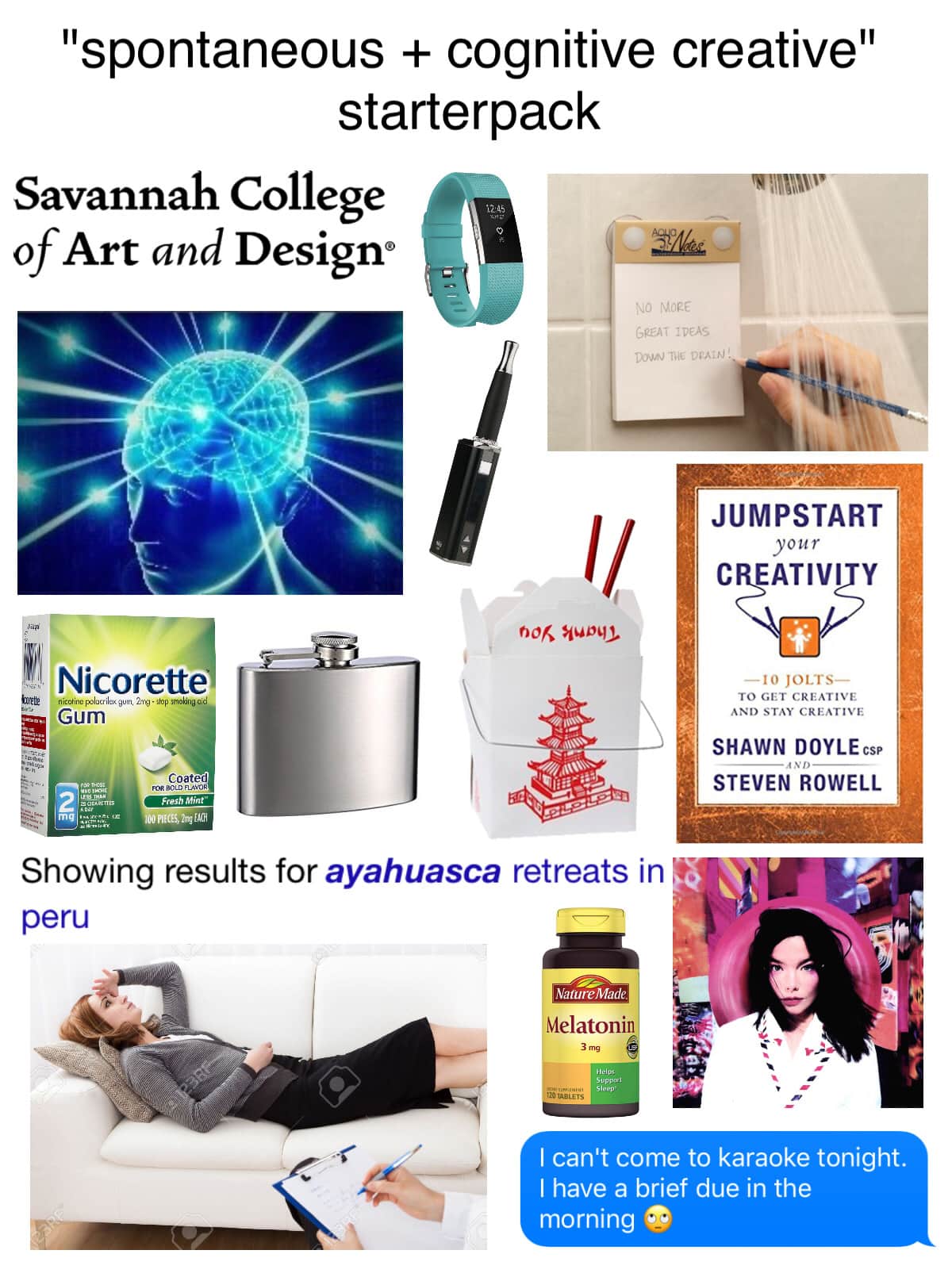
Spontaneous and Cognitive
Creatives who are spontaneous and cognitive thrive on “a-ha” moments. They’ll stay up all night trying to come up with the concept for a project that’s due the next day, and then suddenly get it all done in a few hours in the dead of night once inspiration strikes. In the shower, while trying to fall asleep, during their morning bus ride to work—ideas tend to find this creative at the least convenient times.
This person is the sort to wake up suddenly knowing the solution to a challenge they’ve been ruminating over for weeks. Spontaneous and cognitive creatives might be writers who churn out their best work in a typing frenzy moments before deadline. Or they’re advertising creatives messaging wild ideas to everyone on their team at odd hours of the weekend (and knocking back six coffees before lunchtime).
The basal ganglia are implicated in this type of creativity. The neurotransmitter dopamine is thought to play a role in the sudden, spontaneous nature of this kind of thinking, and dopamine is stored in the basal ganglia. Located at the base of the forebrain, the basal ganglia are a group of nuclei associated with motor control, procedural learning, habitual behaviour, and emotion.
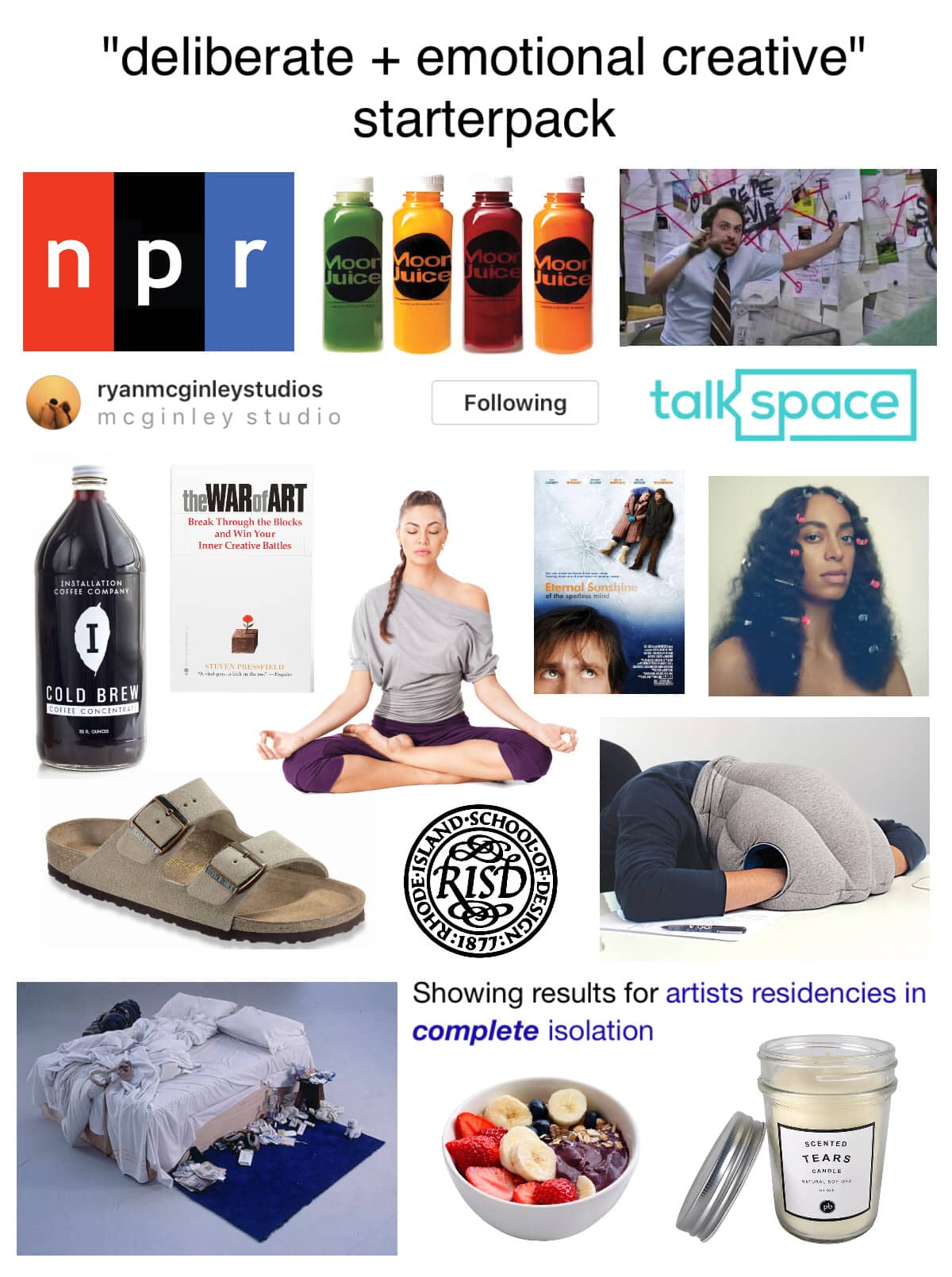
Deliberate and Emotional
Deliberate and emotional creatives tend to make work that’s influenced by their emotions. Highly sensitive to the world around them, these creative types are often into journaling, meditation, and personal reflection. They’re likely to incorporate their personal experiences and identity into their art practice. But these creatives aren’t just about feelings—they’re also pretty logical and goal-oriented. Their work might seem cerebral, but they can explain exactly who and what inspires them, and nothing they create is ever by accident. Whether they’re crafting complicated sculptures out of found objects or publishing a book of self-portraits, there’s always a solid rationale to be found behind their work.
This type of creativity is informed by the prefrontal cortex, which is influential when it comes to planning and decision making—that’s where the deliberate part comes in. The emotional aspect of this creativity can be found in the cingulate cortex, the part of the brain that helps us process emotions, as well as information coming to us from the outside environment.
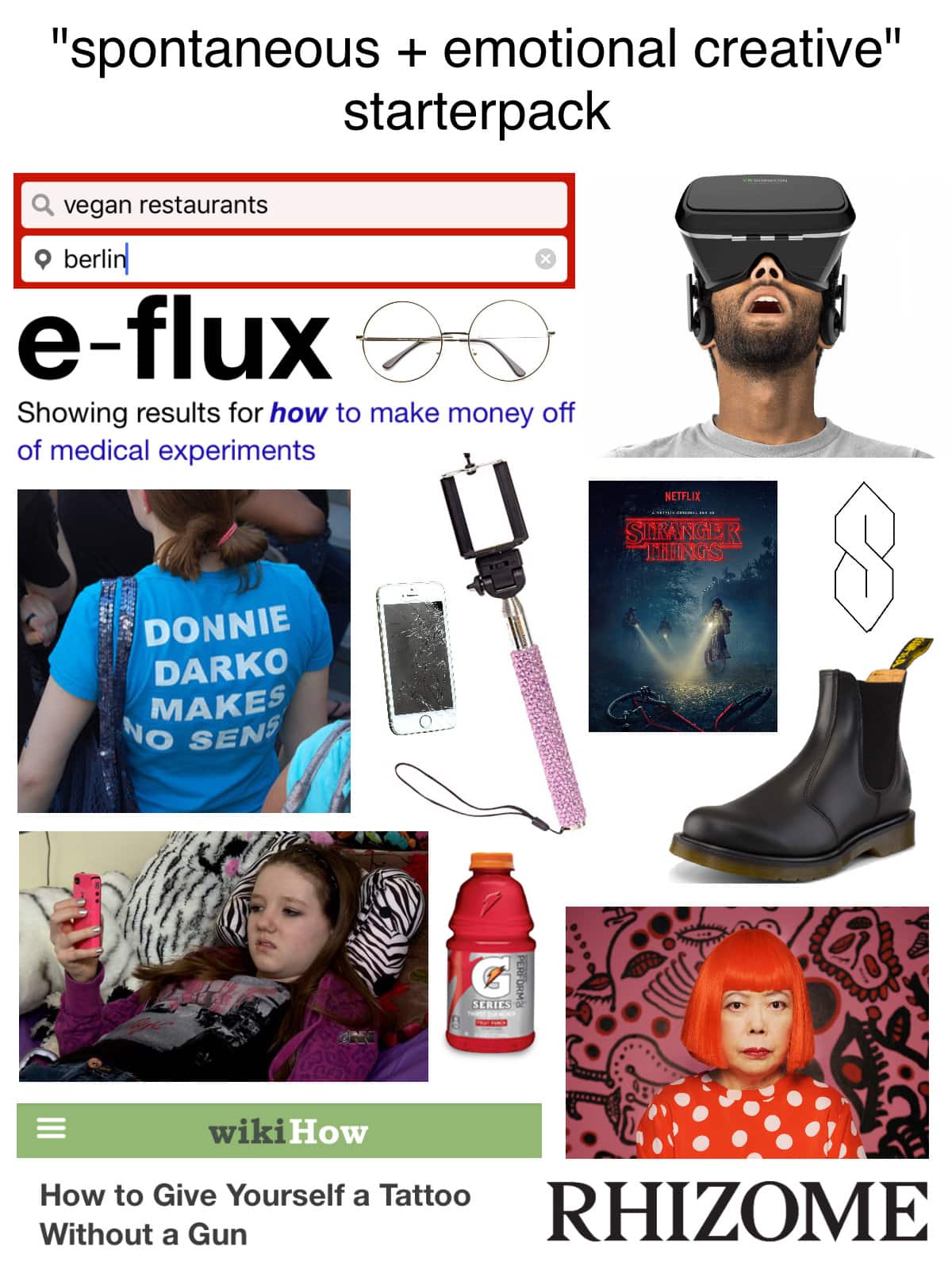
Spontaneous and Emotional
These folks are ruled by their feelings in a different way than deliberate and emotional thinkers are. Spontaneous and emotional creatives are very much influenced by their emotions, often making work that’s deeply personal in a subtle, abstract way. Their creative process is spontaneous in that it tends to be unstructured, dreamy, and hard to explain. You can expect this creative type to say things like, “I had the idea for this work in a dream,” or “I don’t know, it just suddenly came to me!” They’re likely to be creating experimental videos, abstract GIFs, or publishing a book of poetry inspired by their latest breakup.
This creativity is most influenced by the amygdala, the portion of the brain that deals with decision making, memories, and feelings. The amygdala is associated with emotional learning, helping us consolidate the important, emotionally-charged memories that spontaneous and emotional creatives look to for inspiration.
Find out more about creativity and start building your portfolio website today at Format.com.












